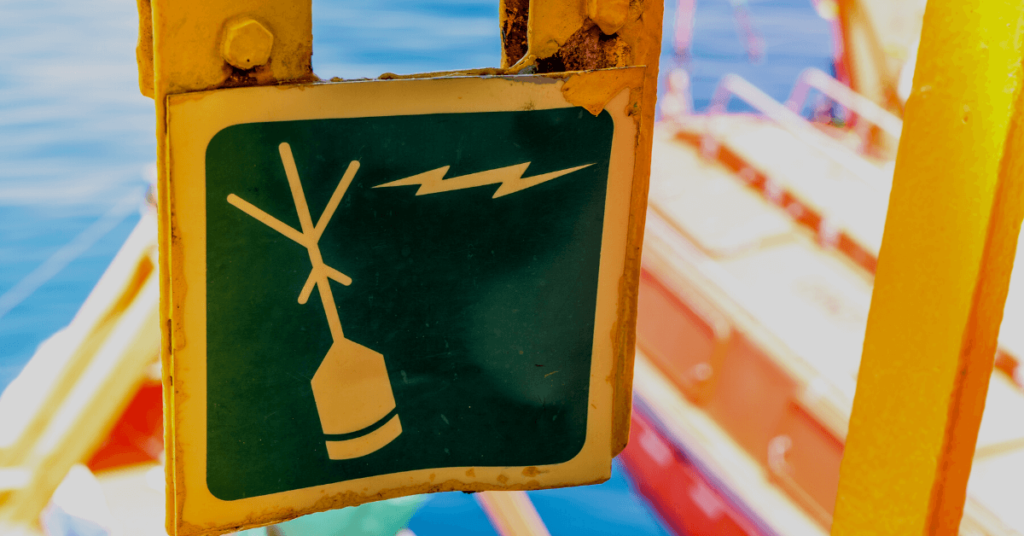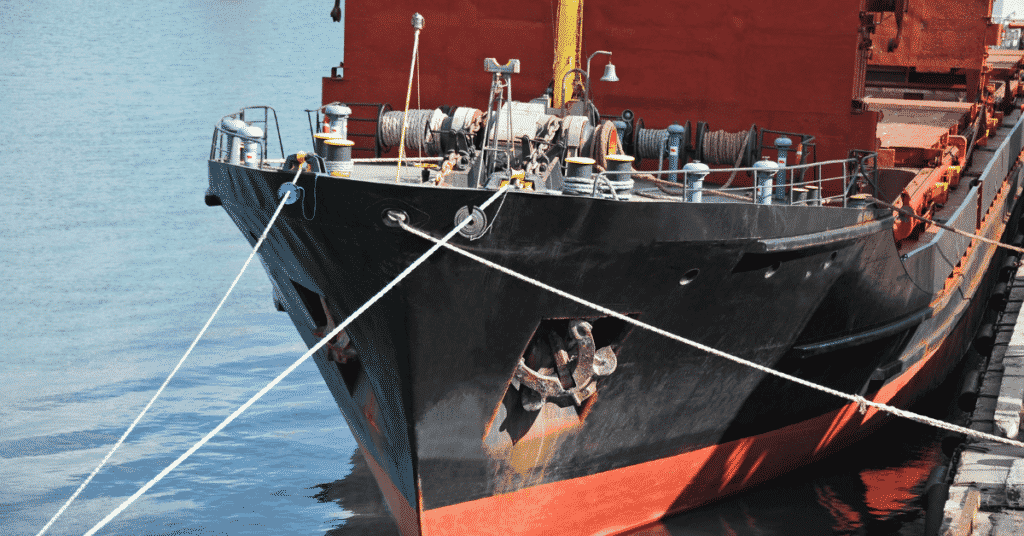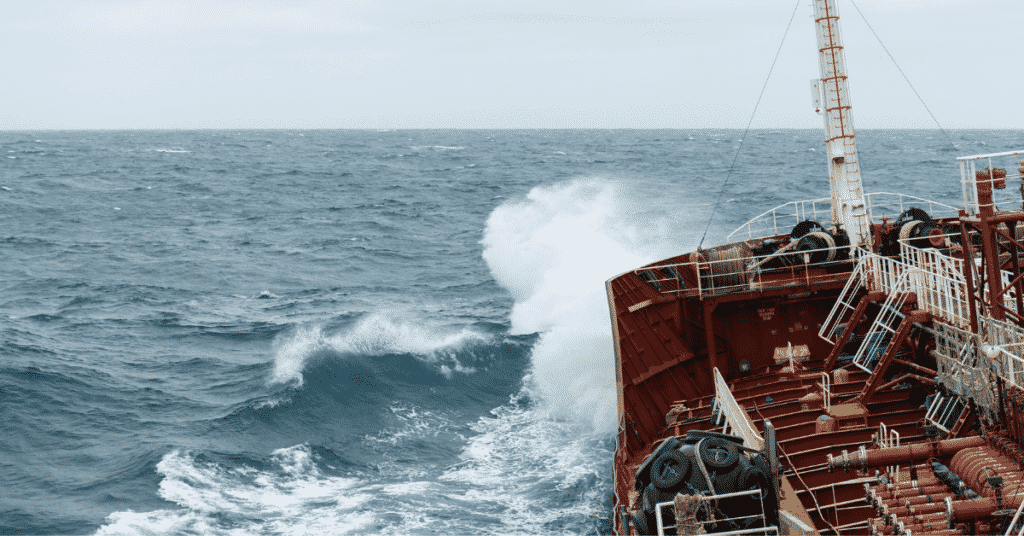Fighting Fire In Ship’s Cargo Hold At Port
Fire is the most widely discussed hazard onboard ships. Fire in a cargo hold is in all probability referred to for dry cargo ships.
In port, it is far easier to get assistance as opposed to that at sea but that doesn’t discount the urgency and severity of the same. In fact, with more people concentrated onboard, proximity to flammable object, and dissimilar fire fighting practices, render it even more necessary to adhere to the strictest dictum.
Actions To Take In Case Of Fire –
Assuming that the fire has occurred in ship’s hold with general cargo, following are the actions that are suggested to be taken:
- Scream ‘FIRE’ loud to alert everyone around many times
- Sound the fire alarm from the call point which will be somewhere near to you. This will alert everybody to proceed to stations and for the authorities to be informed of the incident

- Use the PA system to announce the location of the fire so that the whole crew knows where to go and what to do with regard to the kind of fire in question
- Constant contact must be maintained with the Master as well as the Chief Engineer (who is most likely the Safety Officer as well) by the handheld VHF
- Cease all operations in this hold and evacuate any person that might be inside or in the periphery of the hold. Send all stevedores ashore and cease operation in every other hold as well.
- Inform the fire brigade
- Follow the Master’s orders as the case may be. In his absence (if he is on shore leave), try and get in touch with him immediately. In the interim, the Chief Officer will be in charge
- If the Chief Officer is also on shore leave, the Second Officer must assume duties. It is highly unlikely that both Master and Chief Officer will be ashore considering that most companies require one such senior officer to be present onboard
- Inform the agents as soon as possible
- Switch off the blowers in the hold in case there are any
- Fight fire immediately to the best of the ability, trying to extinguish it before it spreads
- Care must also be taken to avoid damage to cargo by water in the hold
- The Port Control might ask the vessel to move out to an anchorage to not jeopardise the surrounding vessels in which case stations need to be called and engine on standby

If the above actions do not extinguish the fire, then –
- Ensure that there is nobody inside the hold and shut the hatch
- Shut the fire dampers in the ventilator coamings of the hold
- Start infusing CO2 in the hold

- Carry out boundary cooling
- Do not open the hatch immediately seeing as it is full of CO2 and must be given time and the discretion of the Master
- It must be noted that the OOW must ensure that the duties are executed by the crew as assigned. This is essential to avoid confusion at the time of crisis
- In case that the fire brigade shows up on time, be ready to render all information and provide assistance to them as required. They are far better trained and equipped to fight fire. At the crux of it all remains one fact though– the Master will always be the ultimate in charge irrespective of whoever shows up!
The Fire Brigade
- As mentioned above, the ultimate authority is the Master of the ship
- As soon as the Fire Brigade arrives, their chief must be introduced to the Master for further operational discussions
- The chief on behalf of the Fire Brigade will request for information which will necessarily include:
- Location of the fire
- Nature of the fire
- Any special or specific dangers that the firefighters might be exposed to such as asphyxiation, lack of oxygen, toxic gases, etc
- The fire fighting carried out by the firefighters so far
- Any structural problems that might exist on the ship resulting in instability
- The Master’s opinion and command on the best possible course of action
- The Master and the chief of the brigade will then liaise for the best possible action for this mishap
- The Master and the chief of the brigade will then oversee the whole operation with the OOWs deputed on ground to get the decided methods executed
Opening the Ship’s Hatch
- It is known by now that there is ample CO2 in the hold and caution must be taking while opening the hatch. Clear out all unnecessary/extra members from the vicinity of the hold. All the remaining personnel must don breathing apparatus to be unaffected by a sudden gush of CO2 as well as to be ready to enter the hold if need be
- Keep everybody well clear and open the hatch
- The use of exhaust blower may be made at this point to get rid of the smoke as much as possible
- The ‘masked’ personnel may then enter the hold to check if the fire has been extinguished entirely
- The time spent inside inspecting and/or extinguishing any residual pockets of fire must be kept to the practicable minimum as the BA sets eventually run out
- The hatch must be left open after the personnel have exited the hold to ensure maximum ventilation in hold to rid it of the CO2 and other toxic gases
- After a stipulated time and as decided by the Master after checking for toxic gases, man entry may be allowed in the hold under supervision
- All these events must be logged for reference
Although these theoretical methods hardly make any sense when there is absolute chaos onboard, following a certain procedure streamlines the action that needs to be taken. In all this it must always be remembered that safety of life is of utmost importance and that should always be given priority.
Over to you..
Do you know more about the basics of fighting fire on ships? Let’s know in the comments below or email us at – info@marineinsight.com
You may also like to read – Can Bacteria Cause Fire on Ships?
Disclaimer :
The information contained in this website is for general information purposes only. While we endeavour to keep the information up to date and correct, we make no representations or warranties of any kind, express or implied, about the completeness, accuracy, reliability, suitability or availability with respect to the website or the information, products, services, or related graphics contained on the website for any purpose. Any reliance you place on such information is therefore strictly at your own risk.
In no event will we be liable for any loss or damage including without limitation, indirect or consequential loss or damage, or any loss or damage whatsoever arising from loss of data or profits arising out of, or in connection with, the use of this website.
Do you have info to share with us ? Suggest a correction
Latest Ship Safety Articles You Would Like:
Disclaimer :
The information contained in this website is for general information purposes only. While we endeavour to keep the information up to date and correct, we make no representations or warranties of any kind, express or implied, about the completeness, accuracy, reliability, suitability or availability with respect to the website or the information, products, services, or related graphics contained on the website for any purpose. Any reliance you place on such information is therefore strictly at your own risk.
In no event will we be liable for any loss or damage including without limitation, indirect or consequential loss or damage, or any loss or damage whatsoever arising from loss of data or profits arising out of, or in connection with, the use of this website.

About Author
Shilavadra Bhattacharjee is a shipbroker with a background in commercial operations after having sailed onboard as a Third Officer. His interests primarily lie in the energy sector, books and travelling.
Subscribe To Our Newsletters
By subscribing, you agree to our Privacy Policy and may receive occasional deal communications; you can unsubscribe anytime.






















thanks